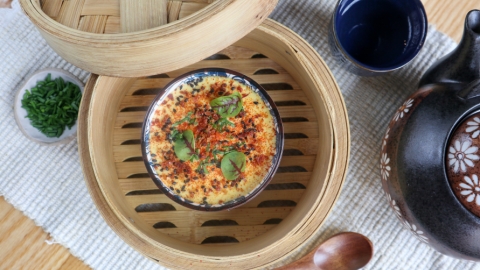Welcome to Chinatown
It was a big day in February 2022, when the Chinese Canadian Museum opened in Victoria’s Chinatown, which is the oldest Chinatown in Canada.
In response to an official apology by the provincial government in 2014 for the hardship and discrimination Chinese British Columbians encountered through the years, Chinese Canadian museums were opened, first in Vancouver and then in Victoria. Victoria’s Chinese Canadian Museum is located in Fan Tan Alley, the narrowest commercial street in North America. (The name "Fan Tan" originated from a popular Chinese game that was played at many clubs in Chinatown and in Fan Tan Alley—which I actually have a personal connection to, as it's where my grandfather and father worked!)
Chinatowns were created because Chinese immigrants felt more comfortable and safer in areas with common culture, so they lived and worked in or near a Chinatown. Today, people of all backgrounds and ethnicities live, work, open businesses and access Chinese food, everywhere. And while those of us working or volunteering at the Chinese Canadian Museum are asked many questions about Chinese history and culture, the most asked question is, “where should I eat?”
It’s a difficult question to answer, as the options are endless and diverse, and many restaurants have come and gone. Foo Hong became popular when then Premier Dave Barrett said it was his favourite. Another was Embassy Café, where many of us have fond memories of their butter tarts, honey buns and donuts and their Saturday prime rib lunches. Outside Chinatown, we remember Ming's Chinese Restaurant and Jack Lee’s Chinese Village.
One long-standing business that remains is Don Mee restaurant, first a grain wholesaler and then a restaurant. It was one of the first restaurants to open late (until 2am) and offer free delivery. The restaurant is now over 80 years old and specializes in seafood and dim sum. Dim sum is a favourite, and at Don Mee they still bring carts to your table offering dumplings, such as siu mai and har gow, and other delicacies like sticky rice, black bean spareribs and chicken feet. A visit to Chinatown should also include a stop at Loy Sing Meat Market for barbecue and crispy pork, barbecue chicken or duck to take home, or a takeout lunch of rice with some protein on top. Opened in 1889, Loy Sing is the oldest continuously operating Chinese business in North America.
Because the original immigrant workers in 1858 came from the southern part of China to pan for gold, most restaurants in Chinatown offer Cantonese-style dishes like chow mein, chop suey and wonton soup, including Ocean Garden, Shanghai City, Fan Tan Café and Wah Lai Yuen. The latter is known for baked goods like barbecue pork buns and coconut buns. The other popular bakery is Victoria BBQ House & Bakery on Government Street, right next to where my grandfather and father had their Sing Toy shoe store.
Some current Chinatown restaurants offer spicier cuisine from the Szechuan and Hunan regions; the Little Yunnan Restaurant features the traditional “Crossing the Bridge Rice Noodle” and MOMI Noodle known for Guilin rice noodles, a 2,200-year legacy that began in China’s Qin dynasty. There are also restaurants such as Ghost Ramen, Dumpling Drop, Chubby Dumpling, Bao and the Bubble Tea Place that cater to younger, more contemporary Asian taste buds. And a newer addition to Chinatown is Ugly Duckling, which “takes its inspiration from the intersection between Vancouver Island’s magical terroir and the rich cultural heritage” of Canada’s oldest Chinatown.
Today’s Chinatown offers more than just Chinese cuisine, housing two Indian restaurants, three Japanese restaurants, a French patisserie, a Filipino bakery, a German-inspired Schnitzel House, the award-winning MAiiZ Nixtamal Eatery and Swans hotel and pub. Tea is the most popular Chinese drink, and since 1992 Silk Road Tea has introduced many to the world of teas at their award-winning shop in Chinatown. Many coffee shops have also opened here, including Bean Around the World, which has roasted its own beans in Chinatown since 1996. The Union Pacific Coffee Co., located in a heritage building which was once a carriage repair shop and brothel, is another coffee enthusiast favourite, along with Habit Coffee on Pandora Street.
Although some of Chinatown’s restaurants may not be Chinese-owned, most of the buildings are still owned by Chinese families or Chinese associations. One example is QV Café & Bakery. The property is owned by the Shon Yee Benevolent Association and was originally a car repair shop, which explains the building’s façade. The original owner named his coffee shop QV because his last name was Quan and QV stands for Quan Valdez instead of the 1960’s coffee character, Juan Valdez. Brasserie L’Ecole, a casual French restaurant, opened in 2001 in a heritage building used to house migrant workers in the early 1900s. Its kitchen was once a separate building that had a Chinese school—hence the name L’Ecole. It is located next to the Yen Wo Society heritage building which has the Tam Kung Temple, which is the oldest Chinese temple in Canada.
Some feel the diversity of restaurants has changed Chinatown. However, Chinatown continues to welcome thousands of visitors every year, including many dedicated locals. Our Gate of Harmonious Interest reminds us to live in harmony and signifies that all are welcome in our community—and the culinary diversity supports this concept.






